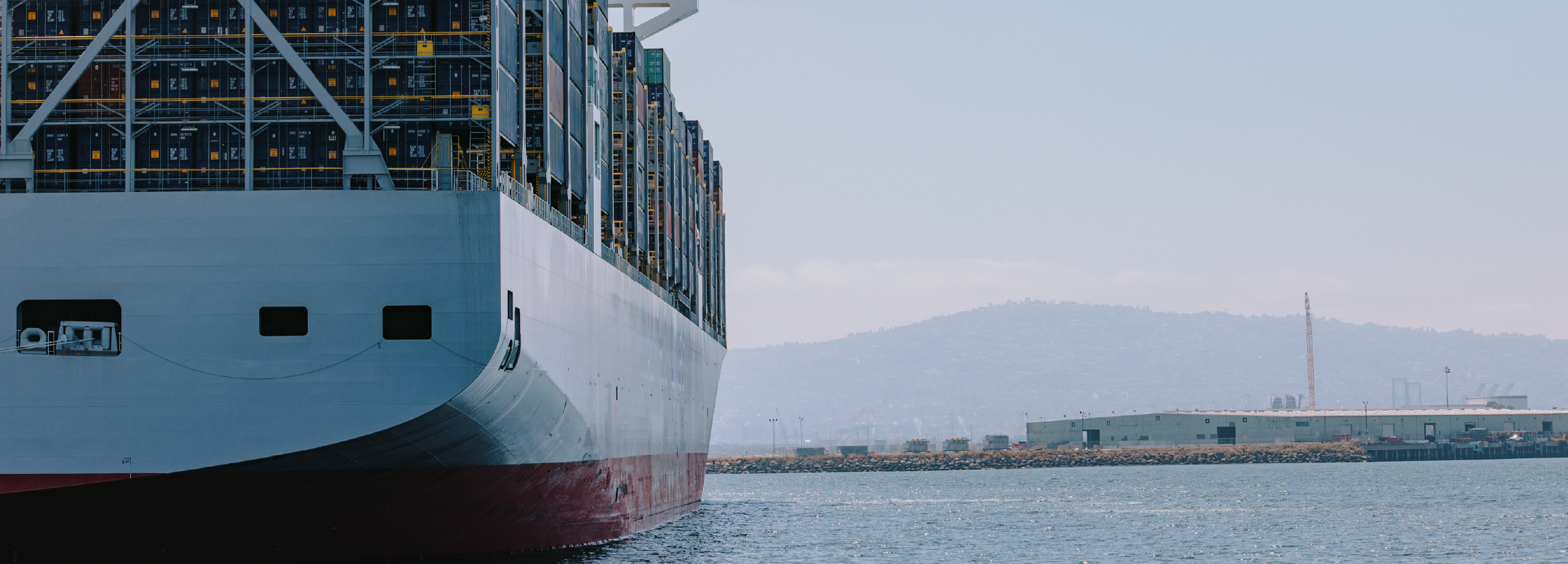How Uber Freight reimagines freight procurement with real-time technology

In recent months, the freight market has been softening with rates falling by about 30% since January 2022 highs.* While rates have decreased, freight procurement has not gotten any easier. After facing heightened levels of tender rejection and heavily relying on an inflated spot market throughout 2020-2021, shippers who locked in contracted rates at the start of 2022 are now paying significantly above spot market rates for their shipments.
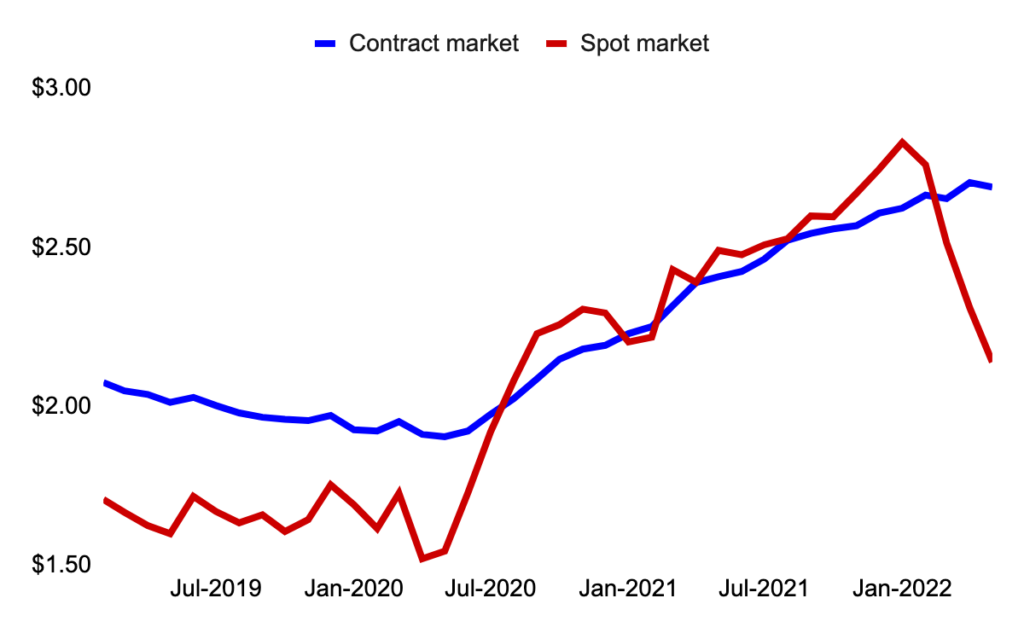
This market shift is driving many shippers to reprice their contracted awards, which has several negative repercussions:
- Operational intensity: Each repricing exercise takes time away from logistic teams’ ability to focus on higher-level strategic initiatives.
- Service concerns: If the market begins to re-inflate, shippers may find it hard to maintain high levels of tender acceptance and meet customers’ service expectations.
- Higher cost: If the market continues to decline, shippers may need to continue to reprice their awards to keep up with the market, eroding carriers’ trust in contractual commitments. If the market tightens, shippers may once again see high levels of tender rejection and need to rely on the spot market to secure capacity.
- Lack of transparency: Neither contract nor spot rates reveal the underlying carrier cost, leaving the shipper wondering if the price they pay is fair.
At Uber Freight, we believe that the solution to these challenges is for shippers to shift to transparent, real-time procurement. Since 2019, when we became a pioneer in this space, shippers across all sizes, including Fortune 100 companies, have sourced capacity transparently using Uber Freight at competitive rates in a constrained and ever-changing market, particularly on low-volume, volatile lanes.
We are excited to share how our real-time procurement products can now be leveraged as a holistic solution to procure capacity in any market condition even on higher volume lanes, providing better cost and service than traditional procurement approaches and overcoming the typical blank check concerns of cost-plus programs. This has been achieved through the development of innovative cost budgeting and risk management features that empower shippers with unprecedented control over cost/service.
Procuring transparently, in real time
The core idea behind real-time procurement is to provide shippers with direct access to Uber Freight’s digital freight marketplace, instantly connecting them to more than 1.7 million drivers and using algorithms to continuously drive optimal procurement decisions. Once a carrier is sourced, Uber Freight’s technology digitally executes shipments. Upon delivery, the shipper pays the carrier rate realized on the marketplace, plus a pre-agreed-upon fee. This approach presents advantages in tight and soft markets.
In a tight market, shippers can vastly expand their carrier network versus contract and spot, offering a service advantage and reducing transportation costs. As shippers tender more volume to Uber Freight’s marketplace, they can attract repeat bookings from hundreds of carriers on each lane, increasing competition for their loads and operational efficiency since our marketplace sources capacity automatically. Best-in-class pricing and booking algorithms drive optimal procurement outcomes.
During the pandemic, customers like Rural King were challenged to find truck capacity to keep their shelves stocked. Rural King turned to Uber Freight’s real-time procurement solutions as their primary provider on hard-to-cover lanes to ensure that shipments reached shelves on time. Over the past year, Rural King has reduced procurement costs by more than 20% by utilizing real time procurement solutions.
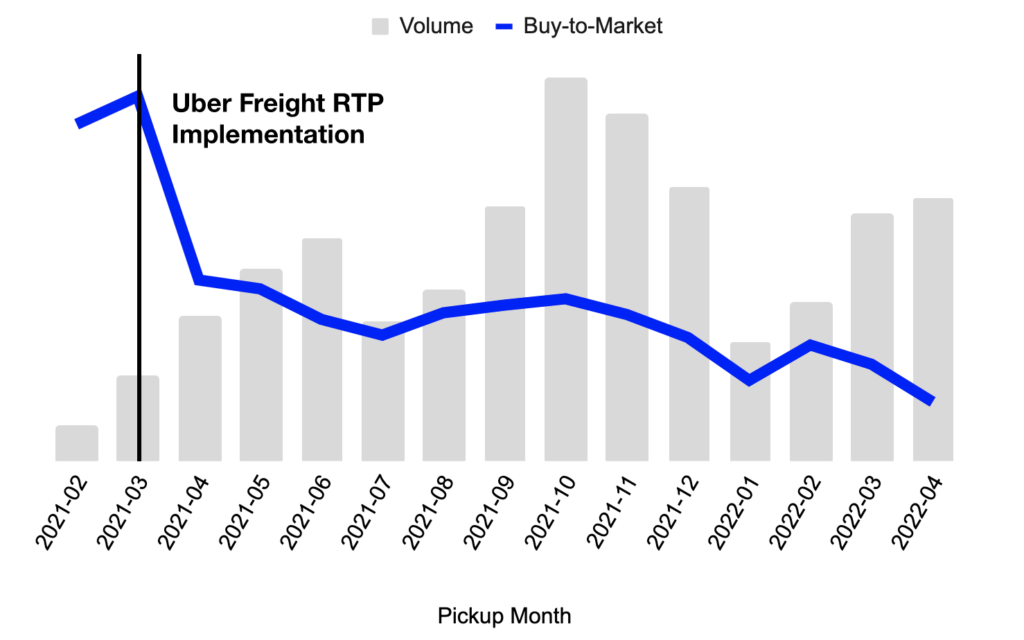
In a loose market, shippers can take advantage of declining rates, avoiding time-consuming off-cycle RFPs and mini-bids. If the market continues to soften, shippers can continue to capitalize on falling rates.
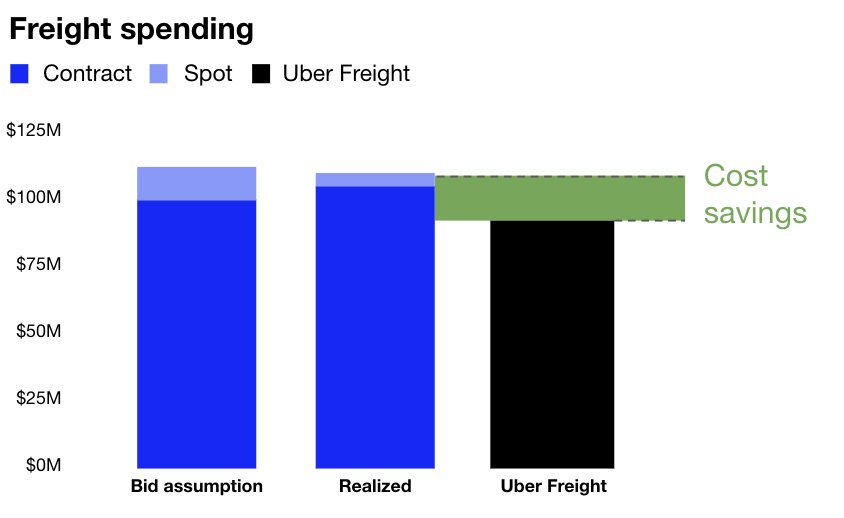
One of the top 10 beverage shippers in the US leveraged Uber Freight’s real-time procurement solution as the primary on select lanes and is saving 8.5%+ compared to incumbent primary rates with a total of $800K+ savings projected in 2022.
Cost budgeting and risk management
As the industry pivots to real-time procurement strategies, shippers want to budget costs and manage volatility. Traditional cost-plus strategies have historically under-delivered on this need due to a fundamental lack of transparency and control into how truck capacity is sourced, often making cost-plus feel like a blank check to brokers.
At Uber Freight, we’ve been investing in product innovation that equips shippers of all sizes with increased control over their freight spending when using our real-time procurement options. We have tailored our solutions to shippers’ individual needs, including providing ways for them to set granular price and priority controls at every load and budgeting cost at a lane level. These capabilities are now also available to Transplace-managed transportation customers, with Transplace actively controlling price and priority controls and routing freight to the best channel to achieve the best outcome for its customers.
Load-level price and priority controls
For shippers who prefer to control freight spending at a load level, we’ve launched price and priority controls. Shippers can set the load priority and the maximum rate they’re willing to pay carriers. Our platform’s pricing algorithm uses these inputs to drive optimum cost and coverage outcomes.
During the pandemic, a Fortune 100 food and beverage company restructured its logistics team’s workflow to leverage Uber Freight’s real time technology as its capacity procurement tool on a substantial portion of its network. The company’s active utilization of price and priority controls through EDI-based TMS integration successfully driven optimal cost outcomes on individual loads, based on the team’s knowledge of network lanes and their cost/service objectives.
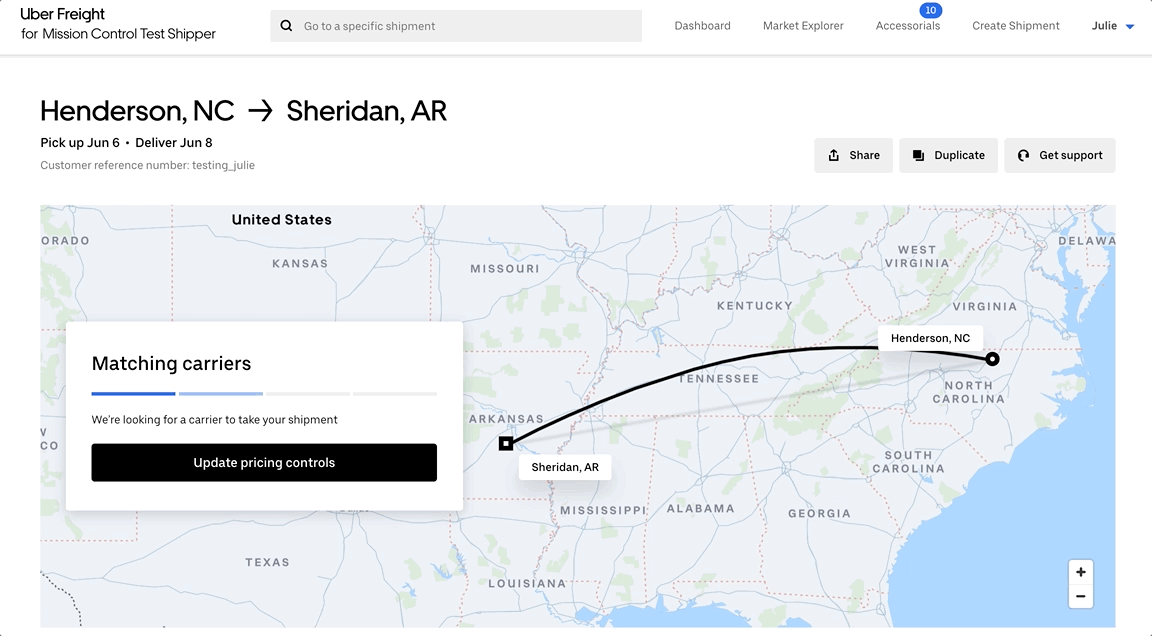
Lane level price caps and transparent risk pricing
For shippers who wish to control lane-level costs, Uber Freight has recently launched a new cost-budgeting experience called price caps. Using this feature, Uber Freight agrees to place a ceiling on the rate charged on a predetermined set of lanes, so that shippers pay the lower of the realized cost on the marketplace and the agreed-upon rate cap. Price caps are configurable and can increase or decrease depending on shippers’ risk appetite and budget. Based on the agreed price caps, Uber Freight transparently charges a risk premium based on the historical cost volatility of each lane and the probability of prices exceeding the caps. Uber Freight will then aim for 100% tender acceptance regardless of market conditions.
Unlike contract rates, which are subject to failure in a volatile market, price caps enable shippers to budget cost with certainty because the risk of the market moving is fully priced into our service fee. With transparent real-time procurement and price caps, shippers can maximize exposure to falling rates in a deflationary market while receiving cost protection in a tightening market.
This risk-pricing construct is a paradigm shift that brings freight transportation on par with other commodities where reliable risk hedging has long been available. This has only been possible because of Uber Freight’s marketplace liquidity and digital-first approach to freight procurement.
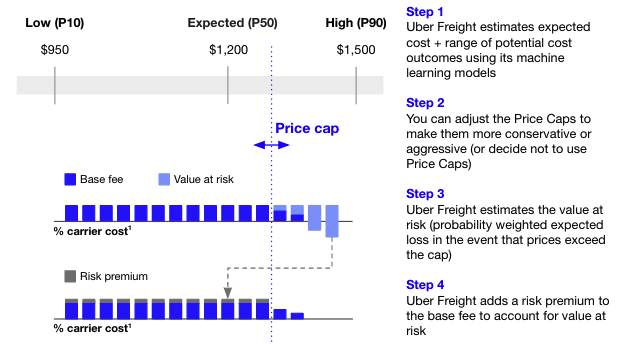
How Transplace’s managed transportation customers can access transparent and real-time procurement
Real-time procurement capabilities are also available to Transplace’s managed transportation customers, under a premium offering that enables them to leverage Transplace’s market knowledge, operational excellence, engineered network-analysis, and expanded access to capacity to achieve fully optimized procurement outcomes at every load. Transplace can select lanes where Uber Freight’s marketplace outperforms other options and manage price and priority controls to achieve an optimal cost/service tradeoff. Alternatively, Transplace also uses other capacity solutions at its disposal.
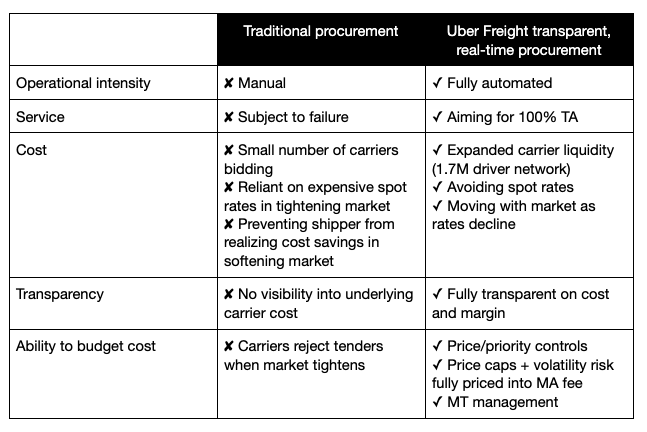
Uber Freight is committed to transparent pricing and is willing to convert primary contractual relationships to this model at any time during the annual procurement cycle and repricing events.
To learn more about hassle-free, real-time freight procurement, click here. Join us on Thursday, June 30, 2022, for a Freightwaves fireside chat on navigating difficult market conditions with real-time technology, register here.
*DAT, Uber Freight analysis.

